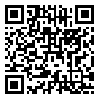BibTeX | RIS | EndNote | Medlars | ProCite | Reference Manager | RefWorks
Send citation to:
URL: http://ptj.uswr.ac.ir/article-1-271-fa.html
Purpose: The traditional view regards limb selection in reaching a hemispheric specialization and an permanent biological phenomenon. However, recent studies have questioned this idea. Instead, they suggest that the task conditions is also an effective factor. The present study includes two experiments in right and left handed children examining the effect of object location as a task condition on limb selection in unilateral reaching.
Methods: A total of 84 children aged 5-6 years (48 right handed and 36 left handed) were recruited in this study. Participants performed reaching task in two conditions: 1) Picking a cube from 1 of 7 locations and putting it in a box placed in the front of them at mid-line and 2) Picking a cube from 1 of 7 locations and putting it in a box placed on the opposite location.
Results: Measurement was performed by calculating and recording the percentages of the responses and the data were analyzed using Chi-square test. In both experiments, most of the subjects used their dominant limb in the ipsilateral hemispace (P<0.05). It was more consistent in right handed children. In the second experiment, the left dominant children used their left upper limb more frequently in the ipsilateral hemispace but the right handed children used their right upper limb in almost all situations.
Conclusion: The findings of this study are against the end-state comfort and in accordance with the hemispheric bias hypothesis. The findings are in line with previous studies that the object location can affect limb selection in unilateral reaching in children.
دریافت: 1394/4/23 | پذیرش: 1394/9/7 | انتشار: 1394/10/11
| بازنشر اطلاعات | |
 |
این مقاله تحت شرایط Creative Commons Attribution-NonCommercial 4.0 International License قابل بازنشر است. |



